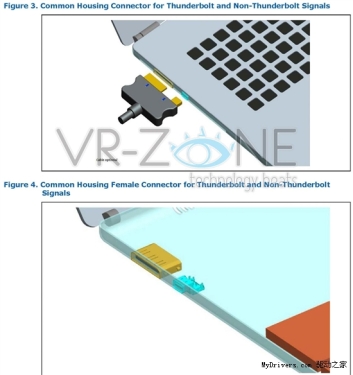 Although the Ultrabook Ultrabook is still not successful, but Intel's attention and expectations that it is quite high, the future will continue to increase in hardware specifications and design, such as through the Thunderbolt Thunderbolt interface introduced docking station to solve the notebook itself Because of the pursuit of ultra-thin and led to the problem of limited input and output.
Although the Ultrabook Ultrabook is still not successful, but Intel's attention and expectations that it is quite high, the future will continue to increase in hardware specifications and design, such as through the Thunderbolt Thunderbolt interface introduced docking station to solve the notebook itself Because of the pursuit of ultra-thin and led to the problem of limited input and output. Simply put, Intel recommends that notebook manufacturers add a large expansion interface and a mini DisplayPort interface side by side to connect the docking station and port replicator by cable or direct connection.
Intel put forward some suggestions for this proposal, but to a large extent, notebook manufacturers can choose what expansion scheme they use, as long as they can pass PCI-E, DisplayPort signal transmission can be, for example, mini DisplayPort, HDMI through DisplayPort++, through USB VGA, eSATA via PCI-E SATA controller, built-in USB host for USB and audio connections and more. Intel also proposed that the use of daisy-chain Thunderbolt devices, but it depends on what type of Thunderbolt control chip is used, the cost and complexity will be higher.
In addition, due to technical limitations, the onboard Ethernet controller must directly access the RJ-45 network interface. Otherwise, technologies such as Intel vPro and Microsoft Connect Standby will not work properly.
In addition, the application range of the docking station is often very narrow. It is limited to specific products. When the Ultrabook is replaced in the future, the docking station may have to be replaced.
Do you speak USB 3.0? Intel is naturally reluctant to put much effort into USB 3.0 while pushing its own Thunderbolt technology, and also claims that USB 3.0 is not suitable for use in a docking station because it cannot be used as a video interface, nor can it transmit specific protocols.
At present, various notebook manufacturers have not made any response to this, only to see some of Intel's reference solutions.
Gwtee Electric Manufacture Co., Ltd , http://www.dgflashlight.com
![<?echo $_SERVER['SERVER_NAME'];?>](/template/twentyseventeen/skin/images/header.jpg)